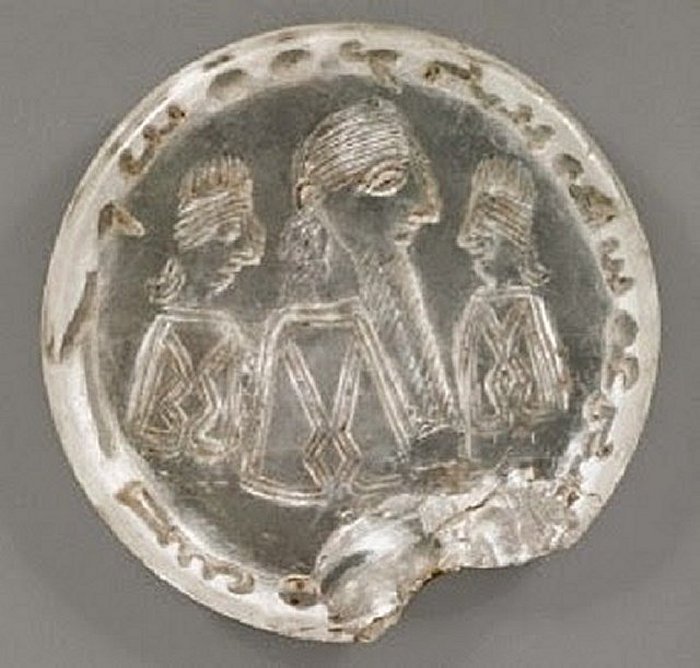Mani: Apostle Of Light And His Ancient Rock Crystal Seal
Ellen Lloyd - AncientPages.com - A major gnostic religion originating in the Sassanid era of Babylonia was founded by the Persian prophet Mani (216-277 CE).

Rock Crystal Sasanian Seal: Mani and two of the Elect priests. The inscription reads, "Mani, the Apostle of Jesus Christ". The seal once used by the prophet Mani to authenticate his writings and correspondence. It is housed in the National Library of France.
Mani, who in the past was considered by scholars to be a Christian heresy, intentionally created a universal church that incorporated Christian, Zoroastrian, and Buddhist concepts.
Today, his religion - Manichaeism - is accepted as an independent religion. His new religion would not simply replace the previous religions but instead represent the fulfillment of what the previous religions had promised but not been able to live up to.
Most of Mani's original writings have been lost, but numerous translations and fragmentary texts have survived and can provide invaluable historical insights.
Image source: National Library of France.
An ancient rock crystal seal once used by the prophet Mani to authenticate his writings and correspondence is now housed in the National Library of France. The artifact has been studied by Zsuzsanna Gulacsi, professor of Comparative Cultural Studies, to provide new interpretations and prepare the seal for further research.
She published her findings in the Bulletin of the Asia Institute.
Prophet Mani was the founder of a religion now called Manichaeism. He preached a universal philosophy that included elements of Zoroastrianism, Buddhism, Christianity, and Hinduism.
The seal is flat on one side and rounded on the other, with a recessed carving on one half, creating a positive image on the opposite side. Mani is flanked by two people, possibly disciples, and an inscription reading 'Mani, the apostle of Jesus Christ' forms the perimeter.
According to Gulacsi, Mani stood out among the religious leaders of the time because he wrote his doctrine, compared to Jesus, Mohammad, and the historical Buddha, who were not known to read or write.
He believed other religious leaders had their teachings distorted because they could not write themselves.
"Their disciples did not have the capacity of a prophet, whose clarity of religious insight was believed to surpass that of ordinary human beings," said Gulacsi, who believes that Mani wore his crystal seal as a pendant, a practice of that time.
"...his seven canonical works included the Treasure of Life, Living Gospel, Book of Giants, Book of Mysteries, Letters, Psalms and Prayers [all in Syriac Aramaic], and the Shabuhragân [in Persian]). Jesus, he said, came to the West, and after his death, his disciples wrote down his words.
Zoroaster came to Persia but did not write books, though his disciples remembered and wrote down his words after his death. And, when the Buddha came, he preached much wisdom and established churches, but he did not write anything, and, again, it was his disciples who wrote down his words after his death..." according to Judith Weingarten's blog.
The rock crystal is flat on one side and rounded on the other, with a recessed carving on one half, creating a positive image on the opposite side.
The Mani's seal is a unique surviving artifact about the size of a quarter; the thin quartz seal was likely once encased in gold to facilitate its use.
In 274, Mani died in prison after being persecuted for his religious teachings. His belongings were likely passed to his successor, but the crystal seal's fate is only known once it turned up in Paris in 1896, where it was purchased and housed in the gemstone section of the National Library of France.
Despite its historical significance, Mani's engraved crystal seal had escaped attention until recently.
Written by - Ellen Lloyd – AncientPages.com
Updated on December 17, 2023
Copyright © AncientPages.com All rights reserved. This material may not be published, broadcast, rewritten or redistributed in whole or part without the express written permission of AncientPages.com
More From Ancient Pages
-
 On This Day In History: Battle Of Lihula Between Swedish And Estonian Armies Was Fought – On August 8, 1220
News | Aug 8, 2016
On This Day In History: Battle Of Lihula Between Swedish And Estonian Armies Was Fought – On August 8, 1220
News | Aug 8, 2016 -
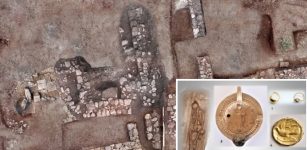 Ruins Of Long-Lost Ancient City Of Tenea Built By Trojans Discovered
Archaeology | Nov 21, 2018
Ruins Of Long-Lost Ancient City Of Tenea Built By Trojans Discovered
Archaeology | Nov 21, 2018 -
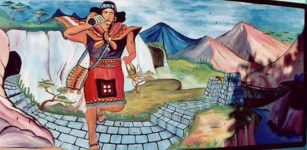 Inca Communication: Mailmen Of The Inca Empire Were Fast Roadrunners
Ancient History Facts | Mar 20, 2016
Inca Communication: Mailmen Of The Inca Empire Were Fast Roadrunners
Ancient History Facts | Mar 20, 2016 -
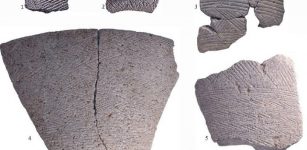 Mysterious Ancient ‘Triangle Code’ And Curious Markings Discovered On Vessels In Israel Reveal Something Interesting
Archaeology | Feb 11, 2019
Mysterious Ancient ‘Triangle Code’ And Curious Markings Discovered On Vessels In Israel Reveal Something Interesting
Archaeology | Feb 11, 2019 -
 On This Day In History: Unua Libro ‘First Book’ Describing Esperanto Published – On July 26, 1887
News | Jul 26, 2016
On This Day In History: Unua Libro ‘First Book’ Describing Esperanto Published – On July 26, 1887
News | Jul 26, 2016 -
 First Genome-Wide Ancient Human DNA From Sudan Shines New Light On Nile Valley Past
Archaeology | Dec 20, 2021
First Genome-Wide Ancient Human DNA From Sudan Shines New Light On Nile Valley Past
Archaeology | Dec 20, 2021 -
 Mysterious Bronze Age Burial Chamber Discovered In Devon, UK
Archaeology | May 16, 2024
Mysterious Bronze Age Burial Chamber Discovered In Devon, UK
Archaeology | May 16, 2024 -
 Humans Have Been In The Arctic For Over 40,000 Years – New Discoveries Reveal
Archaeology | Jul 12, 2022
Humans Have Been In The Arctic For Over 40,000 Years – New Discoveries Reveal
Archaeology | Jul 12, 2022 -
 Unknown Ancient God Was Worshipped In Mesopotamia – Sacred Texts And Archaeology Reveal
Civilizations | May 9, 2018
Unknown Ancient God Was Worshipped In Mesopotamia – Sacred Texts And Archaeology Reveal
Civilizations | May 9, 2018 -
 Okanagan Indians’ Myth Of A Lost Island Paradise Inhabited By White Giants – Are Their Descendants Living In British Columbia?
Featured Stories | Dec 29, 2020
Okanagan Indians’ Myth Of A Lost Island Paradise Inhabited By White Giants – Are Their Descendants Living In British Columbia?
Featured Stories | Dec 29, 2020 -
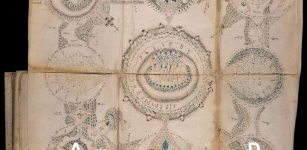 Bristol Academic Cracks Voynich Code – Century-Old Mystery Solved
Archaeology | May 15, 2019
Bristol Academic Cracks Voynich Code – Century-Old Mystery Solved
Archaeology | May 15, 2019 -
 Mysterious Location Of The Amazing Land Of Punt – Can This Puzzle Be Solved One Day?
Featured Stories | Jul 18, 2016
Mysterious Location Of The Amazing Land Of Punt – Can This Puzzle Be Solved One Day?
Featured Stories | Jul 18, 2016 -
 Spectacular 2,500 Years Old Shwedagon Pagoda In Myanmar – World’s Oldest Pagoda
Featured Stories | Oct 18, 2018
Spectacular 2,500 Years Old Shwedagon Pagoda In Myanmar – World’s Oldest Pagoda
Featured Stories | Oct 18, 2018 -
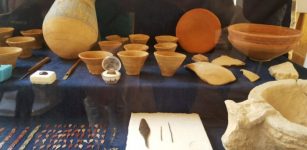 New Discoveries In the Valley Of The Monkeys In Luxor, Egypt
Archaeology | Oct 11, 2019
New Discoveries In the Valley Of The Monkeys In Luxor, Egypt
Archaeology | Oct 11, 2019 -
 Mysterious Old Ship With No Crew Reaches The Canadian Coast
Featured Stories | Jul 25, 2024
Mysterious Old Ship With No Crew Reaches The Canadian Coast
Featured Stories | Jul 25, 2024 -
 In The Neanderthal Site Of Combe-Grenal, France: Hunting Strategies Were Unaffected By Changing Climate
Archaeology | Jan 19, 2023
In The Neanderthal Site Of Combe-Grenal, France: Hunting Strategies Were Unaffected By Changing Climate
Archaeology | Jan 19, 2023 -
 Mediterranean Hunter-Gatherers Relied On Marine Resources More Than Previously Thought
Archaeology | Feb 22, 2023
Mediterranean Hunter-Gatherers Relied On Marine Resources More Than Previously Thought
Archaeology | Feb 22, 2023 -
 X-Ray Reveal Ghostly Portrait Of Mary Queen Of Scots Hidden Underneath 16th Century Painting
Archaeology | Nov 3, 2017
X-Ray Reveal Ghostly Portrait Of Mary Queen Of Scots Hidden Underneath 16th Century Painting
Archaeology | Nov 3, 2017 -
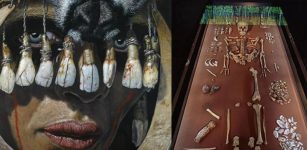 DNA Study Sheds New Light On The Mysterious 9,000-Year-Old Shaman Burial In Bad Dürrenberg
Archaeology | Nov 29, 2023
DNA Study Sheds New Light On The Mysterious 9,000-Year-Old Shaman Burial In Bad Dürrenberg
Archaeology | Nov 29, 2023 -
 Reconstructed Face Of A Young Man Who Lived Some 1,300 Years Ago
Archaeology | Jun 11, 2019
Reconstructed Face Of A Young Man Who Lived Some 1,300 Years Ago
Archaeology | Jun 11, 2019

